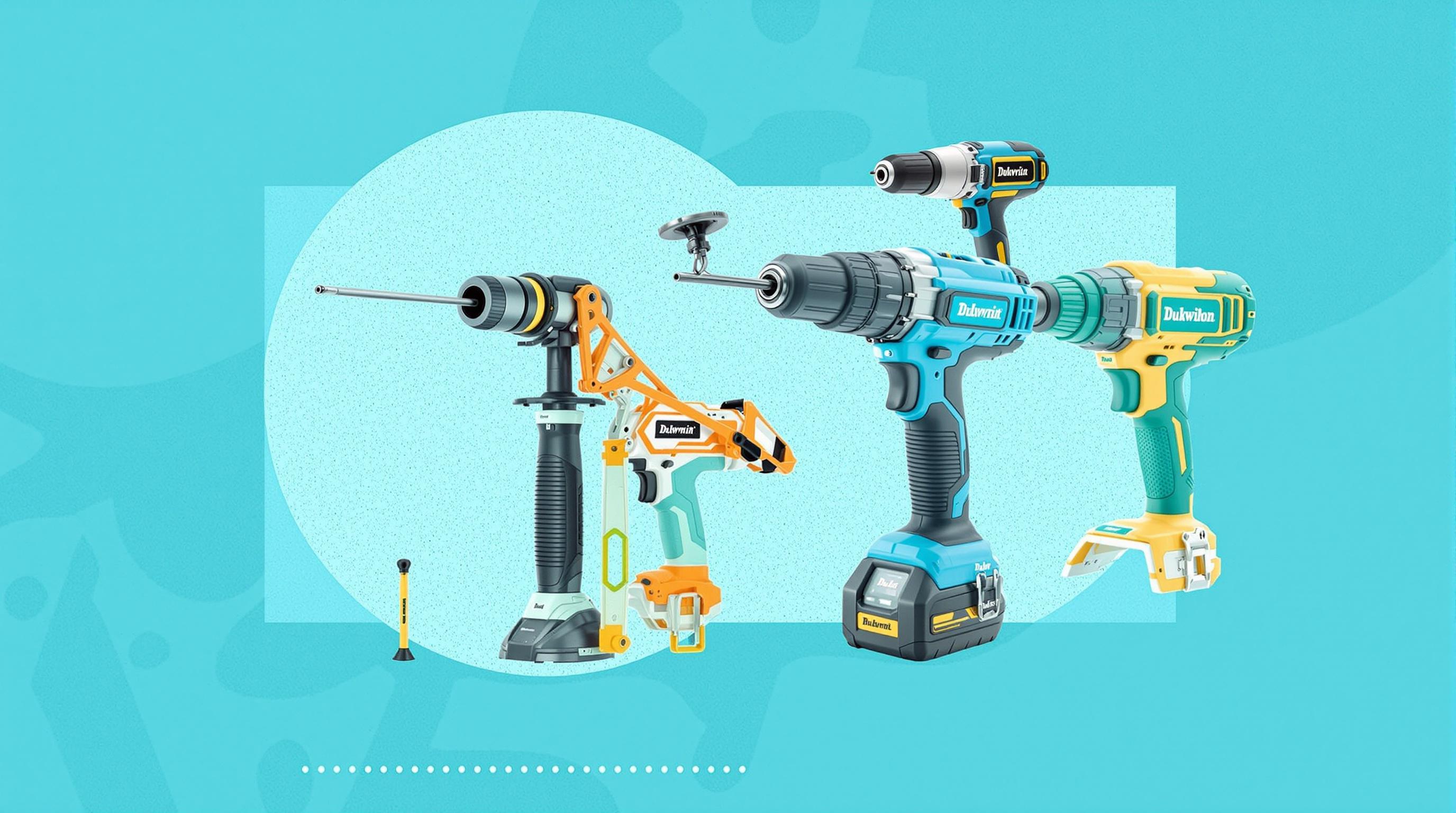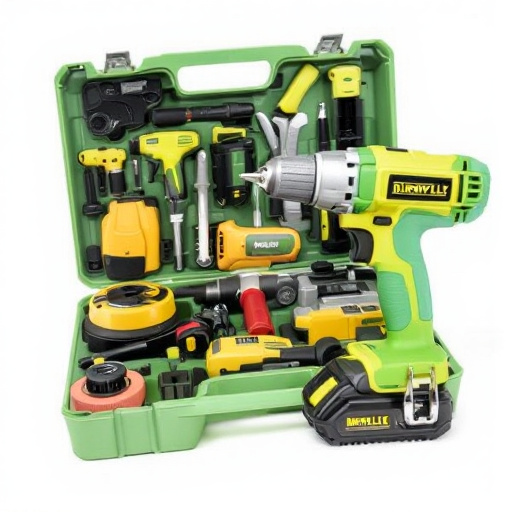Featured Articles
- 7 Game-Changing Electric Screwdrivers Released in the Last 5 Years Ranked for Ultimate DIY Efficiency
- Revolutionizing DIY: How Upcycled Home Tools are Shaping Sustainable Renovation Trends
- The Hidden World of DIY Biohacking: Unleashing Your Home Tools for Wellness Innovation
- The Rise of DIY Urban Gardening: Tools and Supplies for Crafting Green Spaces in Small Places
- The Rise of Eco-Friendly Home Tools: Transforming Sustainability into Everyday DIY Projects
Revolutionizing DIY: How Upcycled Home Tools are Shaping Sustainable Renovation Trends
Revolutionizing DIY: How Upcycled Home Tools are Shaping Sustainable Renovation Trends
In an era where sustainability is no longer just a trend but a necessity, upcycled home tools are becoming catalysts for transformative DIY projects. This article explores the innovative world of upcycling, showcasing how it shapes sustainable renovation trends while providing examples, statistics, and personal stories that highlight its growing popularity across various demographics.
The Rise of Upcycling: More Than Just a Trend
According to a report by the Environmental Protection Agency, around 292.4 million tons of garbage was generated in the U.S. in 2018 alone, with only 35% being recycled (EPA, 2018). As awareness of environmental issues continues to rise, upcycling has stepped up to the plate as a viable solution, turning trash into treasure. It’s no longer about simply getting rid of the old; it’s about giving it a new life. This shift in mindset is essential among the younger generations, particularly those aged 16-30, who often crave unique, personalized home decor that tells a story.
From Waste to Wonder: The Power of Upcycled Tools
Have you ever glanced at that rusty old toolbox in your garage and thought, “What a waste"? Well, think again! Upcycling allows us to transform outdated items into creative DIY tools that not only have a purpose but also add character to our homes. One creative example is turning old window frames into a rustic wall shelf. Imagine displaying your favorite books or plants layered with history—what a conversation starter!
The DIY Revolution: A Closer Look
DIY enthusiasts are gravitating towards upcycled tools for various reasons. Beyond the eco-friendly aspect, there's a sense of community and shared knowledge that’s growing rapidly. Platforms such as Pinterest and Instagram play host to thriving upcycling communities. Users share tutorials and finished projects, inspiring others to embark on their upcycling journeys. According to a survey by The Freedonia Group, the DIY home improvement market is projected to reach $450 billion by 2025, accelerating the demand for sustainable solutions (Freedonia, 2021).
Economical and Eco-Friendly: The Benefits of Upcycling
While the aesthetic appeal of upcycled tools is undeniable, economic benefits also abound. A growing awareness of rising costs associated with new products has many eager hands reaching for creativity instead of credit cards. With the average cost of home renovations soaring to over $16,000, according to HomeAdvisor (2020), upcycling presents a budget-friendly way to achieve the same beautiful results without breaking the bank. Besides, who doesn’t love the thrill of a successful treasure hunt at home or at garage sales?
Case Study: The Transformation of a Forgotten Garden Shed
Take Sarah, a 28-year-old avid gardener from Oregon, who decided to revive her parent's old garden shed. Instead of purchasing new materials, she meticulously transformed the shed with upcycled tools—old wood pallets became sturdy shelving units, while discarded paint cans provided vibrant colors for sprucing up the ambiance. The project not only saved her over $1,000 but also resulted in a sought-after backyard hub for her friends and family. “Every corner tells a story,” Sarah states as she shares her completed project on Instagram, earning thousands of likes and inspiring others to explore their creative potential.
Humor in Upcycling: Make Your Friends Laugh
Upcycling can even be entertaining! Picture this: a friend walks into your home and sees an old suitcase converted into a quirky coffee table. "Did you just return from a trip or did you just unpack someone’s problems?" they might quip. Adding humor to the conversation materializes into a lighter mood around DIY projects, encouraging even the inexperienced to take the plunge into upcycling.
Community Involvement: Making Upcycling a Collective Effort
In neighborhoods across the globe, workshops and community events are springing up, focused on the merits of upcycling. One such event, “Upcycle Your Junk,” invited locals in a small town in Minnesota to bring in items they no longer needed and engage in various crafting sessions led by experienced DIYers. “It was amazing to see what people could create from what they considered trash,” says Steve, a 45-year-old community organizer. Events like these not only promote sustainability but also foster community bonding.
For the Younger Generation: Engaging the Future
For the savvy Gen Z and Millennials, learning about upcycled tools doesn’t require a hefty investment or tedious research. YouTube channels like "Upcycle That" are blossoming with followers eager to learn about creative repair hacks and tips. Engaging influencers shed light on upcycled living, with DIY challenges that incentivize viewers to share what they've done. The digital age allows them to take part in the global conversation easily—249 million videos with the hashtag #Upcycling on TikTok don’t lie! (Statista, 2023)
Learning Beyond Tutorials: Workshops and Classes
Many community colleges have begun offering workshops on upcycling and sustainable home renovations. Imagine this: a Saturday morning spent learning how to craft your own furniture from palettes while sipping eco-friendly coffee brewed from a local roaster! Participants can walk away not only with skills but friends who share a passion for the environment. For ages 16-70, this inclusive educational format has seen a remarkable turnout.
The Future of Upcycling: Predictions and Trends
The future of DIY and upcycling looks promising, with a growing interest in sustainable materials and practices. By 2030, experts predict that the global upcycled products market will reach approximately $500 billion (Mordor Intelligence, 2023). With continued research toward eco-friendly materials, artists and creators can explore new avenues for innovative projects, especially as the public embraces the concept of a circular economy.
Inspirational Figures in Upcycling
Have you heard of the talented duo, Emily and Grant, from "Pallet Upcycle Project"? This married couple, both in their 30s, create breathtaking furniture exclusively from repurposed materials. Their journey began in their garage, crafting pieces that were so stunning they decided to turn their passion into a business. From videos on how to create wall art from reclaimed wood to furniture that wows, they inspire thousands with their work. “It’s about envisioning the possibilities,” Grant emphasizes. “Every piece has a story just waiting to be told.”
Final Thoughts: Embrace Your Inner Upcycler
In a world of mass consumption, choosing to upcycle isn't just creative; it’s revolutionary. Young or old, there's no age limit to diving into DIY projects that center around sustainability and economic sensibility. Whether it’s turning an old bookshelf into a chic plant holder, or crafting art pieces from discarded items, there's no end to the possibilities. So roll up your sleeves, scour your home, and embrace your inner upcycler—because in the realm of DIY, there’s always room for creativity that honors both the planet and our pockets.
As dressmaker Bette Midler once said, “Bury me at make-up time; I’m still in denial!” Sometimes it’s all about making the most of what we have until the world wakes up to the potential hidden in plain sight. Let’s make every project count, shall we?
In closing, the journey of DIY and upcycling is breathing new life into our homes and communities, creating not only beautiful spaces but a more sustainable future.




